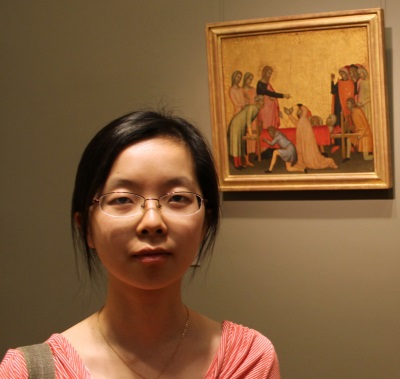Mathematics and Art Restoration
BLOG: Heidelberg Laureate Forum

How could a mathematician help art historians and curators study paintings? That is a question for Rujie (Rachel) Yin, one of the young researchers at the second Heidelberg Laureate Forum.

X-ray photography provides a way to look beneath the surface of a painting. This might reveal, for example, the sketches that an artist made before applying paint. It may also guide the restoration of a deteriorated painting. However, an X-ray combines layers of information into one flat image. Mathematics can help separate these layers into their original sources.
Yin works with paintings panel paintings, paintings created on one or more layers of wood. An X-ray of a panel painting would show the subject of the painting as well as the detail of the wood below. Sometimes panel paintings have been reinforced with an additional lattice of wood known as a cradle. The cradle complicates the X-ray analysis by adding yet another layer to be separated. The cradle may be of independent interest because it may carry information about previous attempts to restore a panel painting.
When the various components of the X-ray image have distinct mathematical signatures, software may be able to separate them cleanly. For example, if the grain panel wood has a regular periodic pattern, the wood will stand out in a Fourier transform or some other analogous transform such as a wavelet decomposition. Yin uses shearlets, an extension of wavelets, in her work. Shearlets can work better than wavelets in capturing effects that do not run parallel to either the horizontal or vertical axes, such as the grain of wood running diagonally across a panel.
Often the panel and cradle are made from different species of wood, with different frequencies in grain patterns, and this makes it easier to algorithmically split apart the panel and cradle components of an X-ray image. When the panel and cradle are made of the same wood, especially oak, the analysis is more difficult. (Yin said that oak panels are particularly hard to work with because the grain is variable. A wood with long, straight grain in and a consistent period is easier to analyze.)
Bayesian methods can be useful in this work because some features are easier to classify visually than others. An approximate classification could be used as an informative prior distribution that would then be refined by the analysis.
Not only can mathematics help you see below the surface, it can help you make sense of what you see

